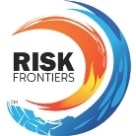National

Bureau of Meteorology: The Bureau of Meteorology is Australia’s national weather, climate and water agency. Through regular forecasts, warnings, monitoring and advice for the Australian region and Antarctic Territory, the Bureau provides one of the most fundamental and widely used services of government. Four senior researchers from the Bureau will act as points-of-contact with with the Centre of Excellence and Ph.D. students will be working with them and University supervisors on common problems.

CSIRO: The Commonwealth Scientific and Industrial Research Organisation (CSIRO) is an independent agency of the Australian Federal Government responsible for scientific research in Australia. Its chief role is to improve the economic and social performance of industry, for the benefit of the community. CSIRO works with leading organisations around the world. It has more than 5,000 experts based in 55 centres, with extensive local and international networks.

NCI: The National Computational Infrastructure (NCI) provides world-class, high-end computational, data intensive services to Australian researchers. Since its inception, NCI has been closely linked with the climate science community. It offers peak supercomputing, data intensive and cloud environments along with expert support for the modelling of climate change, earth systems science and national water management. NCI also manage a number of major national and international datasets; such as the Australian model contributions to CMIP5 and IPCC from ACCESS through the Australian node of the Earth Systems Grid Federation (ESGF); satellite and remote sensing data; and Australian Digital Elevation Model (DEM) are available to researchers at NCI.

The Department of Climate Change, Energy, the Environment and Water: is the NSW Government’s lead climate change agency. It is responsible for:
- developing a climate change science program to enhance the operational programmes of the agency,
- facilitating and coordinating climate change science and information that assists diverse government programs,
- synthesising climate change science and art to inform the community.
Researchers from DCCEEW will be contributing to various programs within the Centre of Excellence.


Risk Frontiers: Established in 1994 in the early days of catastrophic loss modelling, Risk Frontiers is now the longest running natural hazards research centre in the country. It was formed after the insurance sector in Australia reached out to gauge interest in creating an independent research centre in natural hazards. Risk Frontiers is regarded as one of the most credible independent sources of risk knowledge, products and services in the natural disaster space across Asia Pacific, working with government and emergency management agencies, as well as supporting international efforts to help manage disaster risks and improve the safety of communities.
Sydney Water is Australia’s largest water utility with over 3,200 staff and an area of operations covering 12,700 square kilometres. Sydney Water provides drinking water, recycled water, wastewater services and stormwater services to more than four million people in Sydney, Illawarra and the Blue Mountains.
International Partners

CNRS-IPSL: The Institut of Pierre Simon Laplace is an arm of CNRS and comprises nine laboratories with a research focus on the global environment. It includes a unit dedicated to climate modelling studies; a data centre that collects information on atmospheric chemistry, aerosols and clouds; atmospheric and ocean observation services; a group focused on regional and climate studies; and a space instrumentation unit.

ETH Zurich: ETH Zurich is one of the world’s leading universities and research institutions. It was founded by the Swiss Government as a national centre of excellence in STEM (Science, Technology, Engineering and Maths). Much of the Centre of Excellence’s collaboration activities are with the Institute of Atmospheric and Climate Science and the Land-Climate Dynamics Group in particular.

Max Planck Institute for Meteorology: The Max Planck Institute for Meteorology was established in 1975. Scientists at the Institute have a strong focus on climate modelling and measurement methods to explain the natural variability of the atmosphere, the oceans and the biosphere, and to assess the influence of land use changes, industrial development, urbanisation and other human influences.

NASA Goddard Space Flight Center (NASA GSFC): The Hydrological Sciences branch of NASA will be working with the Centre of Excellence. This branch is a world-leading group in the area of terrestrial modelling, particularly in semi arid regions. NASA will be providing a collaborative researcher and access to some of the key tools used by the hydrological branch.

NOAA Geophysical Fluid Dynamics Laboratory (GFDL): The GFDL is a world leading research laboratory with more than 50 years of experience in climate science, including Ocean modelling. It provides the highest level of intellectual and technical support the use of the GFDL ocean model used as part of the Australian Community Climate and Earth System Simulator (ACESS). Key researchers from the laboratory will be collaborating with the Centre of Excellence with its world leading ocean model.

UK Met Office Hadley Centre: The Met Office is a world leader in climate prediction. The Office can provide access to the latest observational data on changing climate extremes. In addition, the Hadley Centre will collaborate with the Centre of Excellence across all four research programs.


University of Arizona: The University of Arizona is regarded as an international leader in terrestrial modelling particularly in semi arid regions. The University has opened its doors to collaboration with researchers with a particular expertise in the diagnostic evaluation of hydrological models.
The National Center for Atmospheric Research (NCAR) is a premier research institution dedicated to advancing the understanding of atmospheric and Earth system sciences. NCAR conducts cutting-edge research on weather, climate, air quality, and related environmental topics. It supports the scientific community with state-of-the-art facilities, data, and tools, fostering collaboration among researchers worldwide.
